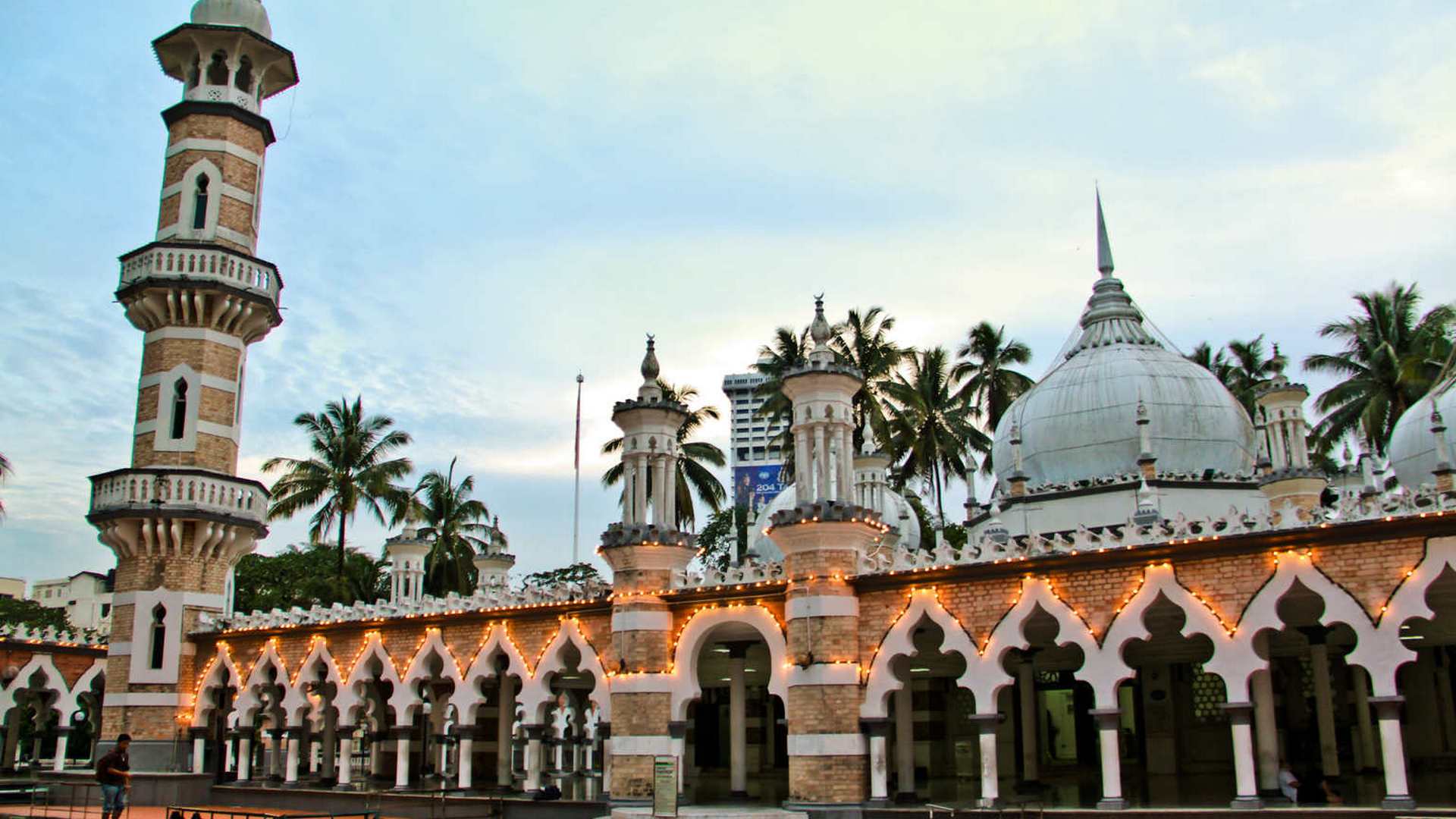Description
Property Name: Masjid Jamek of Kuala Lumpur
Inventory No: 60-3-1
Date of infill of the inventory form: 2008-02-13
Country (State party): Malaysia
Province: Kuala Lumpur
Town:
Geographic coordinates: 3° 8′ 55.49″ N
101° 42′ 24.45″ E
Historic Period: 19th century, 2nd half
Year of Construction: 1897
Style:
Original Use: Mosque
Current Use: Mosque
Architect: Unknown
Significance
Situated in the center of the city on a promontory at the confluence of the Klang and Gombak rivers on present day Jalan Tun Perak, it sits atop the site of a pre-urban Malay cemetery. The British built Masjid Jamek in the administrative center for their Malay civil servants, establishing the core of what would grow into Kuala Lumpur. Masjid Jamek served as the principle mosque for Friday prayers and the center of Islamic activity in Kuala Lumpur until 1967. The plan of the mosque follows a traditional North Indian layout, with the prayer hall opening out into a walled courtyard. The mosque is flanked by two minarets and numerous smaller towers. Three onion domes surmounting the prayer hall and the minarets resemble Mughal architecture. The mosque is an example of British architecture in Malaysia, which involved a combination of Moorish and Mughal elements
Selection Criteria
vi. to be directly or tangibly associated with events or living traditions, with ideas, or with beliefs, with artistic and literary works of outstanding universal significance
State of Preservation
The mosque was designed by Arthur Benison Hubback, and built in 1909. Masjid Jamek served as Kuala Lumpur’s main mosque until the national mosque, Masjid Negara, was built in 1965.The mosque has since been enlarged with extensions built, and the originally open-air forecourt roofed over. One of the domes of the mosque collapsed in 1993 due to heavy rain, but has since been repaired. The masjid was refurbished in 1984 and the minaret nearest the river was underpinned as it was already sloping.
References
–


